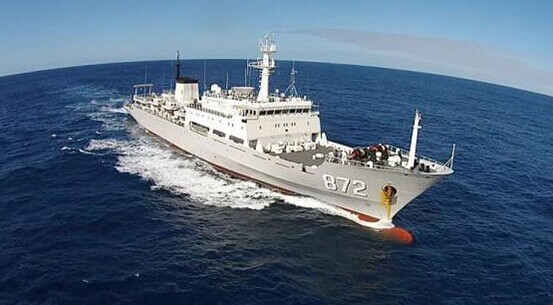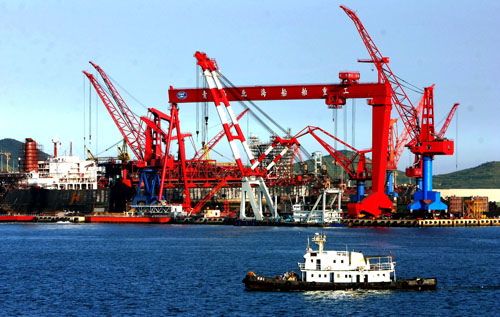The interaction between mechanics and electrochemistry in extremely thin electrodes
[abstract] During corrosion, mechanics and electrochemistry interact always to each other. Although there are thermodynamic studies about the stress-caused change in equilibrium potentials, few multiscale computations have been reported in the literature. In this presentation, we report multiscale computations of the interaction between mechanics and electrochemistry, where first-principals calculations and continuum calculations by solving a modified Poisson-Boltzmann equation are carried out on electrode and electrolyte, respectively, and the electric potential produced by electrons and induced charges links the first-principles and continuum calculations. Monolayer graphene and multilayer graphene films are taken as an example to illustrate the hybrid approach. The calculation results illustrate the quantum capacitance in monolayer graphene, the charge-induced deformation in multilayer graphene, and the Li absorption behavior on monolayer graphene with vacancy. Based on Fermi level change and Dirac point shift, the capacitor of the electrochemical cell is consisted of two capacitors in series, the quantum capacitor and the capacitor of the electric double layer. Thus, the total capacitance can be easily calculated once the capacitances of the two capacitors are available. Simple and analytic formulas are proposed for the three capacitances to predict, in sufficient accuracy, the behavior of capacitance versus potential. The surface eigenstress model is further developed to analytically predict the charge-induced deformation in multilayer graphene films. The charge-induced deformation is asymmetric with respect to negative and positive charges, and the thickness-dependent minimal inplane C–C bond length occurs at the same positive charge of about 3.81x1014 |e|/cm2 for the 1 to 6 layers graphene films. The calculations reveal that Li absorption can be significantly affected by the type of electrolyte and the amount of charges. In CCl4 solvent, Li can absorb on a monovacancy of graphene when the charge of electrode is lower than 1.00x1014 |e|/cm2. But in water, only negative charged electrode can lead to Li absorption on the monovacancy.
時間:2016年8月10日 09:00-09:30
報告人:張統一
個人簡介

張統一院士
中國科學院院士,研究領域包括材料的機械性能、微觀力學/納米力學、微結構與材料性能的關系、鐵電和壓電材料、薄膜、納米線及納米管、微橋/納米橋實驗、擴散與相變。從事材料力學性質的研究。預測并證實了鋼鐵扭轉和剪切載荷下的氫脆現象。澄清了電絕緣裂紋面上電邊界條件,發展了壓電線性和非線性斷裂力學;實驗證明導電裂紋的電斷裂韌性為材料常數,構筑了電致斷裂的理論框架。發展了微觀/納觀力學:建立了微/納橋測試理論和方法及薄膜/基體系統中產生位錯、微/納孿晶和裂紋的臨界厚度理論;給出了應力腐蝕中裂紋、腐蝕膜和位錯交互作用的理論解。曾獲國家自然科學二等獎二次、香港裘槎高級研究學者獎、美國ASM International Fellow獎和中國科學技術協會青年科技獎。
張教授以第一作者及聯合作者身份共發表140多篇SCI學術論文。在斷裂力學,微觀、納觀力學和材料的氫致開裂等領域取得了多項創新性成果,擁有兩項美國專利和一項國家專利,獲兩次國家自然科學二等獎(1987和2007年度),2001年獲得美國ASM International Fellow,2003年獲香港裘槎高級研究學者獎。收到過5張SCI賀卡和1張Elsevier賀卡,祝賀其論文引用次數名列本領域前1%。組織并主持三次國際學術會議,包括首次在中國召開的第八屆國際斷裂基礎大會。特邀為Mechanics of Material,International Journal of Fracture,Engineering Fracture Mechanics,Composites Science & Technology等學報編輯了八期特刊。
其中在香港科技大學完成的4篇代表性學術論文,截至2008年12月30日,SCI引用次數分別達到245,180,147和134次。參與撰寫三本著作。獲得2項美國專利。并受邀在國際、國內學術會議上做大會特邀報告32次。2002年被中國教育部《面向21世紀教育振興行動計劃》“聘請世界著名學者項目”聘請,2001年獲美國ASM International Fellow Award,1988年獲中國科學技術協會青年科技獎,1987年獲中國國家自然科學二等獎(十獲獎人中排第三)。
免責聲明:本網站所轉載的文字、圖片與視頻資料版權歸原創作者所有,如果涉及侵權,請第一時間聯系本網刪除。
-
標簽: 張統一, 2016第四屆國際腐蝕工程大會, 主旨報告

官方微信
《腐蝕與防護網電子期刊》征訂啟事
- 投稿聯系:編輯部
- 電話:010-62316606-806
- 郵箱:fsfhzy666@163.com
- 腐蝕與防護網官方QQ群:140808414





